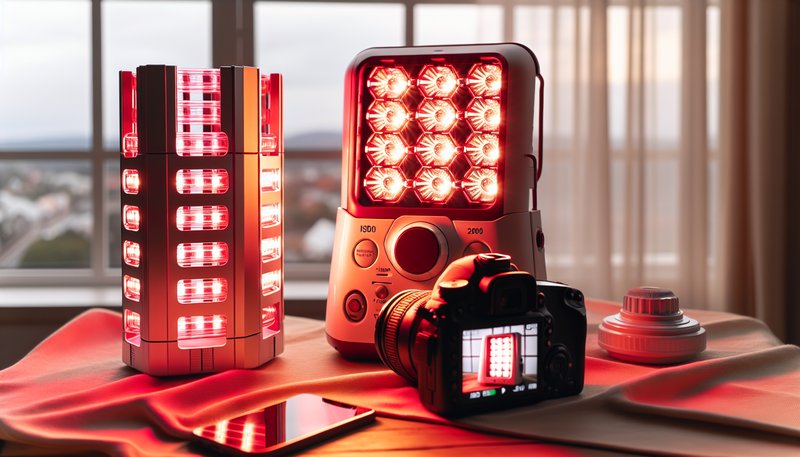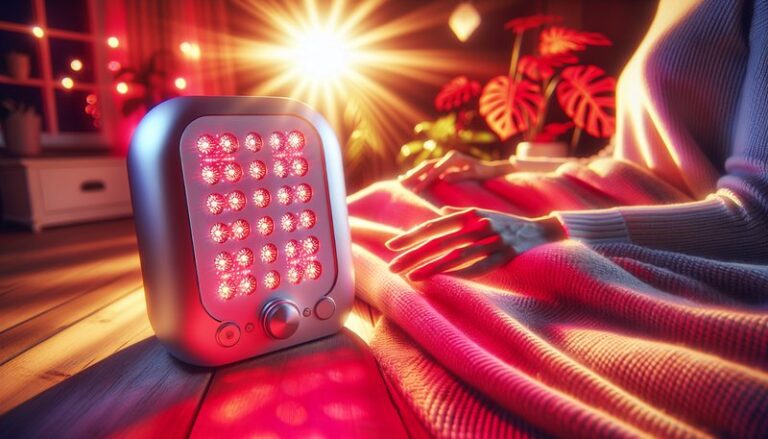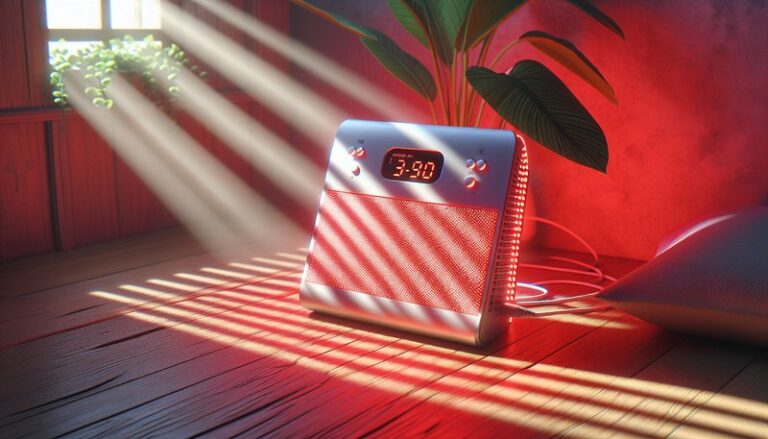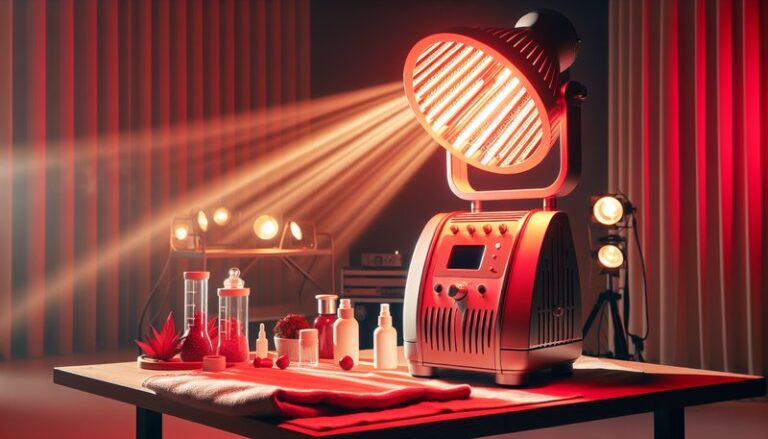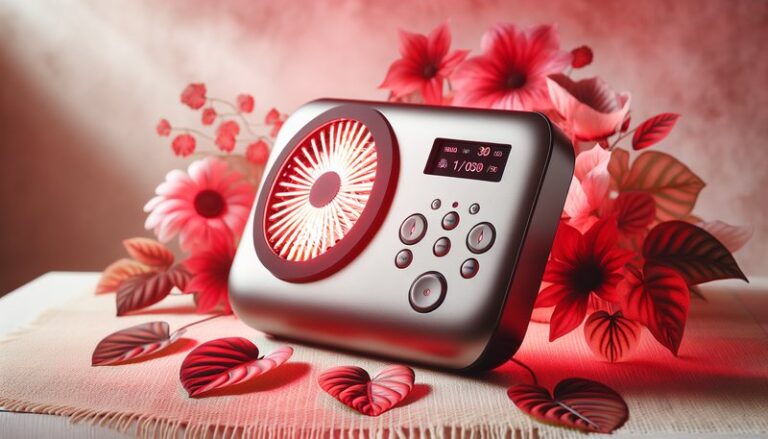What Red Light Therapy Is Fda Approved?
What Red Light Therapy Is FDA Approved?
Have you ever wondered how red light therapy works and whether it is approved by the FDA?
For the full story, read Can Red Light Therapy Alleviate Nerve Pain?
In this article, we will explore red light therapy, its FDA approval status, its benefits, considerations, and alternatives. By the end, you will have a comprehensive understanding of what red light therapy is and whether it might be a suitable option for you.
Key Takeaways
- Red light therapy is a non-invasive treatment that promotes healing and rejuvenation through specific wavelengths of light.
- Several red light therapy devices have received FDA approval for various medical and cosmetic uses.
- Understanding the benefits, risks, and available alternatives can help you make informed decisions about using red light therapy.
What is Red Light Therapy?
Red light therapy (RLT) is a treatment that uses low-level wavelengths of red light to promote healing and reduce inflammation in tissues. It is believed to work by stimulating cellular activity, which can enhance the body’s natural repair processes.
Red light therapy can be administered through various devices, including handheld units, full-body panels, and LEDs. Many clinics offer professional treatments, while consumers can also purchase home use devices. The therapy is typically painless and requires sessions ranging from a few minutes to half an hour.
The Mechanism of Action
RLT operates on a principle known as photobiomodulation. When red light penetrates the skin, it can stimulate mitochondria in cells, leading to increased ATP (adenosine triphosphate) production. ATP is essential for energy transfer within cells, and its increase can promote better cellular function, accelerate healing, and reduce pain.
What are the Benefits of Red Light Therapy?
Many appreciate red light therapy for its multitude of health benefits. Here’s a closer look at some key advantages.
Enhanced Skin Health
Red light therapy is often used in dermatology for treating issues such as acne, rosacea, and signs of aging. Studies show that RLT can increase collagen production, resulting in improved skin texture and reduced fine lines. Some users have reported a more radiant complexion after consistent treatments.
Pain Relief and Reduced Inflammation
RLT has been shown to alleviate pain associated with various conditions, including arthritis and muscle strain. By promoting cellular repair and reducing inflammation, it can enhance recovery after exercise or injury.
Improved Wound Healing
The therapy accelerates the healing of wounds, cuts, and surgical sites. Research highlights that RLT may enhance tissue regeneration and shorten healing timelines, making it a valuable tool in both medical and cosmetic surgery settings.
Mood and Sleep Enhancements
Some studies suggest that RLT can positively influence mood and improve sleep patterns. By regulating melatonin production and supporting circadian rhythms, users may find benefits in their overall wellbeing.
Is it Possible to Use Red Light Therapy at Home?
Yes, home use of red light therapy devices is widely available and increasingly popular. Various devices range from handheld units to larger panels catering to different treatment needs.
What are the Advantages of At-Home Use?
At-home red light therapy provides increased accessibility and convenience for users. By regularly incorporating RLT into your routine, you can maintain treatment without frequent visits to a clinic, potentially saving both time and money.
What are the Disadvantages of At-Home Use?
One challenge is the inconsistency in device quality and effectiveness. Not all home devices are created equal; some may not emit the specific wavelengths or intensities necessary for optimal results. Users must do thorough research before purchase to ensure they are choosing an FDA-approved and effective product.
What are the Things to Consider Before Using Red Light Therapy?
Before starting red light therapy, it is wise to consider a few important factors to ensure safety and effectiveness.
Consult a Medical Professional
Before beginning any new therapy, especially if you have underlying health conditions or are on medication, it’s crucial to consult with a healthcare provider. They can help determine if RLT is appropriate for your individual needs.
Assess Device Quality
Not all RLT devices are FDA-approved or of the same quality. Research products extensively and choose one that has been clinically validated for use in home settings.
Set Realistic Expectations
While many users report positive results, individual experiences can vary. It’s essential to have realistic expectations about the potential outcomes and new routine.
What are the Alternatives to Red Light Therapy?
If red light therapy does not seem suitable for your needs, consider the following alternatives.
Laser Therapy
Laser therapy, like RLT, uses light to treat various conditions but operates at different wavelengths and intensities. It is often utilized for pain relief and skin rejuvenation, providing a more targeted approach but may involve more discomfort.
Photodynamic Therapy (PDT)
PDT combines light with photosensitizing agents for treating specific skin conditions and precancerous lesions. Comparatively, it can be more effective for severe cases but may require more recovery time and professional supervision.
Ultrasound Therapy
Ultrasound therapy utilizes sound waves for deep tissue healing. It’s shown to relieve pain and promote healing in various musculoskeletal conditions, making it a viable alternative for those seeking non-invasive treatments.
Conclusion: Is it Recommended to Use Red Light Therapy?
Red light therapy appears to offer numerous benefits, including skin rejuvenation, pain relief, and improved healing times. However, users must be informed about device quality, personal health conditions, and realistic expectations regarding results. Consulting with a healthcare provider and considering various alternatives can help you determine whether red light therapy is the right choice for your needs.
Find out the complete story Can Red Light Therapy Treat Spider Veins?
Frequently Asked Questions
Is red light therapy safe for everyone?
Yes, red light therapy is generally safe for most individuals. However, it’s always best to consult with a healthcare provider if you have specific health concerns or conditions.
Can you overuse red light therapy?
While RLT is safe, excessive use may lead to irritation or mild discomfort. It’s important to follow the manufacturer’s guidelines and recommendations for usage frequency.
How long does it take to see results from red light therapy?
Results can vary by individual and condition, but many users report noticeable changes within a few sessions. Typically, cumulative treatment is needed for optimal results.
What conditions can red light therapy help treat?
RLT can assist with various conditions, including skin issues, inflammation, pain management, hair growth, and wound healing, among others.
Are there any side effects associated with red light therapy?
Side effects are usually minimal but can include mild irritation or redness at the treatment site. Proper use and following device instructions can help mitigate potential side effects.
